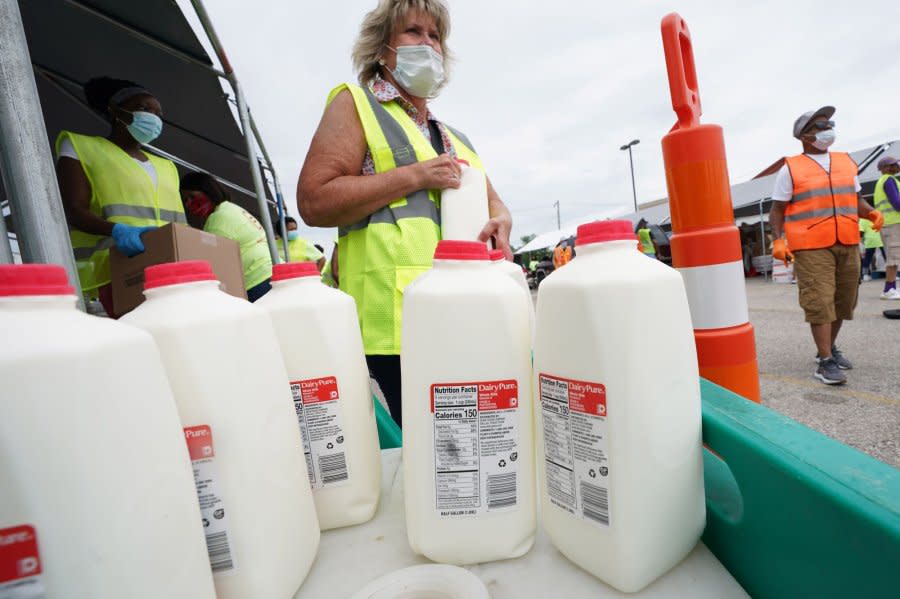Whole Milk in School bill heads to the Senate despite USDA opposition

Jan. 22 (UPI) -- An effort to bring whole milk back to schools across the nation is heading for the Senate, but the U.S. Department of Agriculture is pushing back on the bill, saying it's an end run around carefully considered health guidelines.
Since the passage of the Healthy, Hunger-Free Kids Act of 2010, only low-fat or fat free milk has been allowed to be served in schools. In 2017, the rules were changed to allow those choices to be flavored or unflavored.
After passing the House of Representatives in December, the Whole Milk for Healthy Kids Act has been introduced as a companion bill in the Senate, with supporters hoping it will clear Congress this year and head to President Joe Biden's desk for his signature.
The bill would exempt fluid milk from the saturated fat content calculation, meaning milk fat would not be counted as saturated fat when assessing compliance with USDA nutritional regulations.
Alan Bjerga, executive vice president of communications and industry relations for the National Milk Producers Federation, said he expects the bill will attract the same bipartisan support it had in the House.
"We are working with allies in the Senate to get it to the floor and hope the law can pass the full Congress this year, either alone or as part of other legislation," he said.
According to a 2023 study from the Food Research and Action Council, 15.5 million children received breakfast and 29.9 million children received lunch on an average day during the 2021-2022 school year. Milk was part of the meal.
In a statement to UPI, the USDA said the agency was concerned about the precedent the bill's passage could provide.
"The issue is not milk as a product, but rather the precedent Congress seeks to impose. The rules for school meals were developed through a science-based transparent process," the USDA said.
It added: "Congress is rushing to judgment, and in doing so invites advocates for any and all products in the future to run to Congress, bypassing the science and short-circuiting public engagement. Children's nutrition deserves better than a rush to judgment."
In December, U.S. Sen. Roger Marshall, R-Kansas, called for unanimous passage of the bill, which was opposed by the chair of the Senate Agriculture Committee, Michigan Democrat Debbie Stabenow.
Stabenow said school meal standards currently should continue to be based on dietary science, "not based on which individual food products that we support."
Americans have been steadily losing interest in fluid milk and cream since the 1980s. The average person was consuming 274 pounds of milk a year in 1970, and that dipped to 245 pounds in 1980 and 198 pounds in 2012.
The National Milk Producers Federation's Bjerga said while fluid milk consumption has declined, per-capita consumption of all dairy products is at its highest levels in more than 60 years.
"Whole milk consumption actually increased last year, and four out of every five gallons bought in the U.S. is either whole or 2% milk. Children are going to prefer milk that's similar to what they drink at home -- that's whole and 2%. That means more children receive milk's nutritional benefits and less food is wasted," he said.
According to a 2023 study from the Journal of Dairy Science, 84% of parents said they served 2% fat milk at home, but 68% of parents also indicated that they served non-dairy milk alternatives.
Sarah Amin, an assistant professor of nutrition at the University of Rhode Island's College of Health Sciences, Sarah said that while the Whole Milk for Healthy Kids Act sounds like it's offering choice, but it's inconsistent with the research that says schools should continue to promote fat-free and low-fat dairy options.
"Schools are a critical environment for learning and nutrition, since a large number of children get their daily nutritional needs met from school breakfast and lunch programs," said Amin, who serves as the university's community nutrition education director.
"Early dietary behaviors have a huge impact as kids grow up, so we need to be looking at other sources of these critical nutrients like leafy greens for calcium. It's about messaging, as well, promoting well-rounded diets and cooking."
Whole milk proponents like Bjerga have pointed a shift in understanding milk fat, including a 2018 study that re-examined the role of dairy fats.
A National Library of Medicine analysis from 2019 of 7,467 children, aged 9 months to 8 years, found that whole-milk consumption was associated with a 16% lower chance of becoming obese.
U.S. Rep. Kim Schrier, D-Wash., who introduced the bill in the House, said she expects it to pass in the Senate and be signed into law by Biden. It cleared the House by a 330-99 vote Dec. 13.
"This bill allows for more healthy options for students in the cafeteria, and it does not change existing requirements to provide milk alternatives. We have learned since 2012 that even higher fat milks provide great net benefits for children," Schrier, a former physician, told UPI via email.
"We know that most families choose low-fat or whole milk because kids like those better. With only nonfat or 1% milk available, many students are choosing high-sugar alternatives, such as soda and sports beverages. Many children are also not getting the calcium and vitamin D they need."

